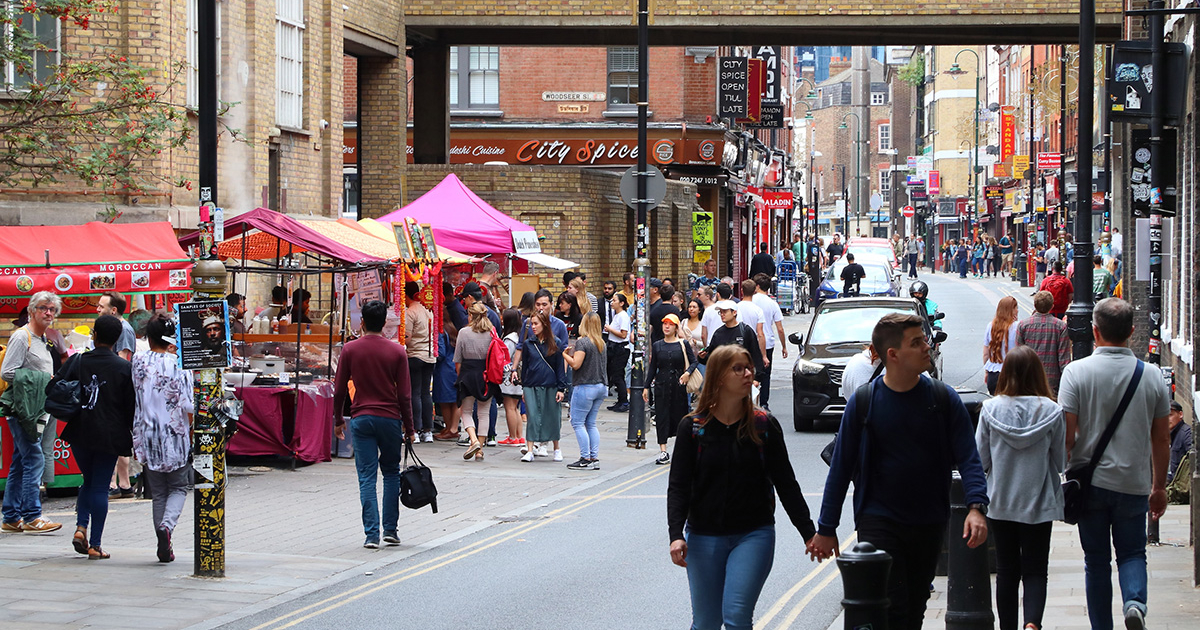The Growth of London
How has London’s Population Changed?
The population of Greater London is higher now than it has ever been at 8,77,9800.
London’s population has been growing for most of the last two hundred years. In 1801, with just over a million inhabitants, it was the largest city in the world. The city grew rapidly during the Industrial Revolution in the nineteenth century due to migration, mainly from other parts of the UK.
London’s population reached its previous peak at the start of the Second World War. The city was badly bombed during the war, and its population fell after 1941. Numbers continued to decline after the war as housing was demolished and people moved out. During the twentieth century, many cities in other countries grew bigger than London.
London’s population has been increasing since 1991. It will likely grow and become a mega city by 2030 when the population reaches 10 million.
How old is London’s Population?
The population pyramid below shows the age-sex structure of England in comparison with London.
London’s population is much larger than any other UK city. It also has a younger population. This helps explain why its population is growing.
Young people, especially in their 20s and 30s, move to London for work. Employment opportunities, higher pay and the perception of a better social life attract them.
Young people, especially in the 20-30 age group, are more likely to have children. That leads to a high rate of natural population increase.
Migrants from around the world add to London’s population. As people arrive, others leave. The balance between the two groups is net migration.
Although net migration into London is quite low, most immigrants are quite young while most leaving are older. This reduces the population’s average age and leads to a great natural increase.
Which ethnic groups make up London’s population?
London is the most diverse city in the UK. Less than half of London’s population is of white British origin.
Migration into London is a significant phenomenon that has shaped the city’s cultural, economic, and demographic landscape. Over the years, London has been a magnet for migrants from various parts of the world, resulting in a diverse and cosmopolitan population. London’s migration history can be traced back centuries, with waves of migrants arriving from different regions. People have migrated to London since Roman times. Saxons and Normans also settled in London. In the post-World War II era, London experienced significant immigration from former British colonies and Commonwealth countries, such as India, Pakistan, the Caribbean, and Africa. This period marked a crucial shift in the city’s demographics, contributing to the growth of multicultural communities and the development of vibrant cultural enclaves. More recently, European Union (EU) expansion and globalisation have significantly shaped London’s migration patterns. The expansion of the EU in the 2000s led to an influx of migrants from Eastern European countries, particularly Poland and Romania. These migrants sought employment opportunities and contributed to London’s labour market, particularly in the construction, hospitality, and healthcare sectors.
What have been the impacts of national and international migration on London?
Population Growth: Migration has significantly driven London’s population growth. Both national and international migrants have contributed to the city’s increasing population over the years. This population growth has influenced housing, services, and infrastructure demand, transforming the city’s physical landscape.
Cultural Diversity: London’s migrant population has brought an incredible diversity of cultures, languages, and traditions to the city. This has enriched London’s social fabric, creating a vibrant and multicultural environment. Different ethnic communities have established neighbourhoods, contributing to the diverse character of London.
Economic Contributions: Migrants have played a crucial role in London’s economy. They have filled gaps in the labour market, particularly in healthcare, hospitality, construction, and finance sectors. Migrants have brought valuable skills, knowledge, and entrepreneurship, leading to innovation and economic growth in the city.
Social Challenges: Migration has also posed social challenges for London. The rapid influx of migrants has put pressure on public services, including healthcare, education, and housing. Additionally, tensions can arise between different cultural groups, leading to social integration issues that must be addressed.
Urban Development: Migration has influenced urban development patterns in London. Migrants often settle in specific areas, forming ethnic enclaves or cultural hubs. This has led to the development of distinct neighbourhoods with their own characteristics and amenities. The growth of migrant populations has driven the regeneration of certain areas and influenced the city’s spatial distribution.
Transport and Infrastructure: Migration has impacted London’s transport and infrastructure networks. Increased population and economic activity have placed demands on transportation systems, necessitating expansions and improvements. Additionally, cultural diversity has influenced the demand for specific amenities and services, shaping the city’s infrastructure.
Political and Policy Implications: Migration has had political implications for London, leading to debates and discussions on immigration policies, integration, and social cohesion. The city’s authorities have implemented various policies to manage migration and promote community cohesion, recognising the importance of balanced and inclusive growth.
It’s important to note that these impacts are complex and multifaceted, with both positive and negative aspects. The continuous influx of migrants has shaped London’s growth and character, contributing to its cosmopolitan identity and making it one of the most diverse cities in the world.
Related Topics
Use the images below to explore related GeoTopics.



